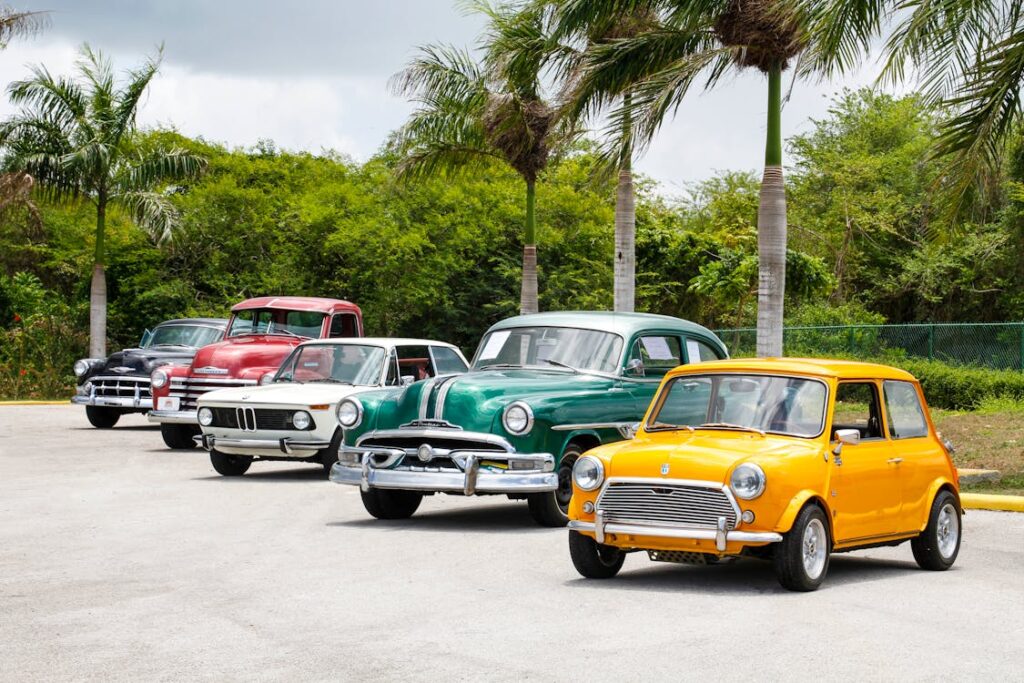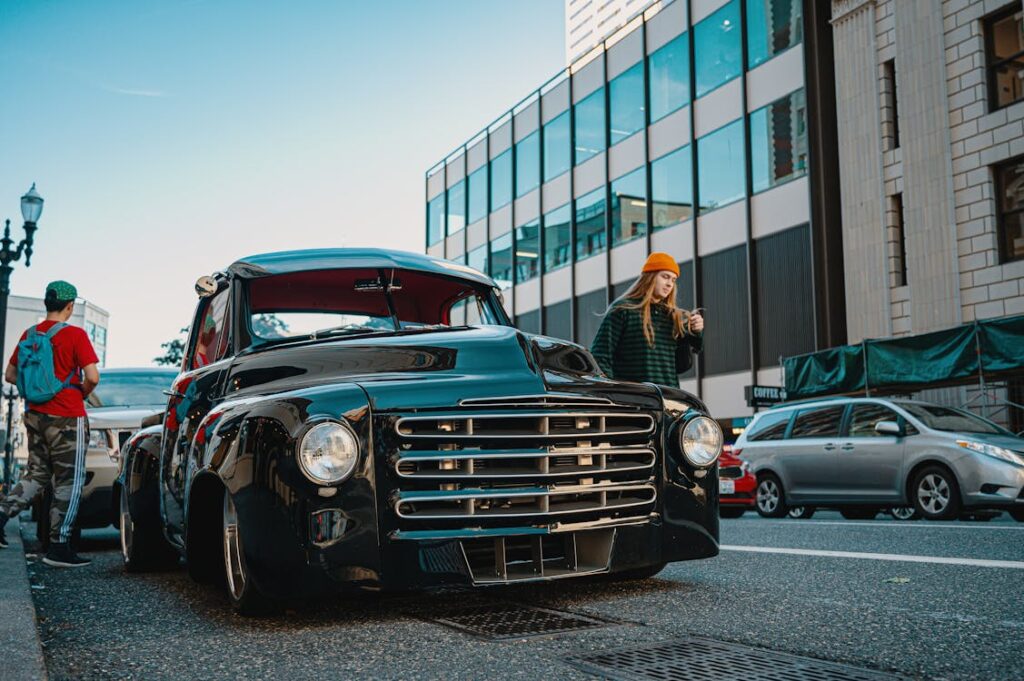
Introduction to Classic Cars
Classic automobiles evoke a experience of nostalgia, mixing engineering prowess with a bygone generation’s aesthetic appeal. Typically, a automobile earns the title “traditional” after achieving 20 to 30 years old, owning particular layout, cultural significance, or restrained manufacturing. These cars, with their undying appeal, are extra than simply modes of transport; they’re rolling portions of records. Owning a traditional automobile is like protecting a chunk of the past, maintaining tales of innovation, craftsmanship, and cultural shifts.
The History of Classic Cars
The tale of traditional automobiles is intertwined with the evolution of the auto enterprise itself. Early classics hail from the pre-battle generation, proposing hand-crafted craftsmanship and particular engineering solutions. The post-battle length introduced a surge in call for for fashionable but lower priced automobiles, with manufacturers like Chevrolet and Ford main the charge. The muscle automobile generation of the Sixties and 70s similarly cemented the popularity of many fashions as icons of electricity and performance. Each generation helped shape the identification of what we now rejoice as traditional automobiles.
Why People Collect Classic Cars
For many fans, gathering traditional automobiles is a ardour that is going past the mechanics. It’s approximately reliving the golden days of automobile records and maintaining the craftsmanship that described every generation. These cars encompass the layout philosophy, technological innovation, and cultural actions in their time. Additionally, traditional automobiles have tested to be stable investments, with many fashions appreciating in fee over time. The shortage of sure fashions blended with growing call for from creditors has became traditional automobiles into treasured assets.
Classic Car Restoration
Restoring a traditional automobile is each an artwork and a hard work of love. It includes bringing a antique automobile again to its unique glory, maintaining authenticity at the same time as making sure the automobile stays functional. Finding unique or duplicate elements may be a challenge, requiring connections with area of interest providers or attending specialised change meets. Some fans pick out the DIY route, getting to know the intricacies in their automobile’s mechanics and records. Others choose expert recuperation services, that could offer meticulous interest to element and information in maintaining originality.
Popular Classic Car Models

Certain fashions have grow to be synonymous with the traditional automobile movement. American icons just like the Ford Mustang, Chevrolet Corvette, and Dodge Charger encompass the spirit of the muscle automobile generation, with their effective engines and ambitious designs. European classics, consisting of the Jaguar E-Type and Porsche 911, are celebrated for his or her smooth traces and delicate engineering. Japanese fashions just like the Datsun 240Z and Toyota 2000GT have received a cult following, supplying a mix of affordability and distinctive styling. These automobiles hold to seize the hearts of creditors worldwide.
Buying a Classic Car: What to Consider
Purchasing a traditional automobile calls for cautious consideration. Assessing the automobile’s circumstance is crucial; rust, engine wear, and the circumstance of the indoors can appreciably have an effect on fee. Checking the authenticity of elements and verifying the automobile’s records also are critical steps withinside the shopping for process. Classic automobile fee courses offer a baseline, however the rarity of sure functions or restrained manufacturing runs can motive expenses to fluctuate. A expert inspection is regularly advocated to keep away from surprises and make certain that the automobile meets your expectations.
Classic Car Maintenance Tips
Maintaining a traditional automobile is fundamental to maintaining its appeal and functionality. Routine responsibilities like oil changes, brake inspections, and checking fluid tiers grow to be even extra crucial with older cars. Proper garage is every other critical aspect—garaging a traditional automobile protects it from the elements, at the same time as the usage of a automobile cowl can save you dirt and scratches. For the ones seeking to modernize their ride, upgrading elements consisting of brakes or the ignition device can beautify reliability with out compromising the automobile’s unique spirit.
Insurance for Classic Cars
Insuring a traditional automobile differs from insuring a contemporary-day automobile. Classic automobile coverage guidelines are normally primarily based totally on “agreed fee,” because of this that the proprietor and insurer agree on the automobile’s really well worth, instead of counting on depreciated marketplace fee. This guarantees that withinside the occasion of a loss, the collector gets reimbursement that displays the automobile’s proper really well worth. It’s additionally crucial to recollect insurance for spare elements, recuperation work, and traditional automobile events. Finding the proper coverage can provide peace of mind, permitting proprietors to revel in their cars to the fullest.
The Classic Car Market

Navigating the traditional automobile marketplace may be each interesting and complex. Auctions, like the ones held with the aid of using Barrett-Jackson or RM Sotheby’s, are well-known for showcasing uncommon fashions and placing document expenses. Online marketplaces have additionally made it less difficult to discover and buy traditional automobiles from across the world. Specialist sellers regularly have a deep understanding of unique manufacturers or fashions, supplying a curated selection. Market traits can shift primarily based totally on nostalgia, popular culture influences, or the provision of unique elements, all of which effect a automobile’s desirability.
The Joy of Driving a Classic Car
Driving a traditional automobile is an revel in like no other. It’s a sensory journey, with the roar of the engine, the texture of antique steering, and the heady fragrance of elderly leather. Unlike contemporary-day cars, traditional automobiles regularly call for a extra hands-on approach, requiring the motive force to simply interact with the machine. Long drives in a traditional automobile require preparation, from checking fluids to making sure tire pressure. But for many, the pleasure of the open road, coupled with the appreciative glances of passersby, makes each mile really well worth it.
Investment Potential of Classic Cars
Classic automobiles may be extra than a ardour; they also can be a sensible investment. Models with restrained manufacturing, ancient significance, or particular functions generally tend to understand over time. Cars just like the Ferrari 250 GTO or Shelby Cobra have visible their values skyrocket, becoming multi-million-greenback assets. However, making an investment in traditional automobiles incorporates risks, inclusive of marketplace fluctuations and the continuing prices of upkeep and garage. For people with an eye fixed for uncommon unearths and a love for the open road, constructing a set may be each worthwhile and lucrative.
Preserving the Legacy of Classic Cars
The legacy of classic cars is preserved through car shows, museums, and enthusiast communities. Events like the Pebble Beach Concours d’Elegance bring together the best examples of vintage automobiles, celebrating their history and craftsmanship. Classic car clubs offer a space for owners to share their passion, exchange knowledge, and organize group drives. Preserving these vehicles is about more than mechanical upkeep; it’s about keeping alive the stories and memories that these cars embody. Encouraging younger generations to appreciate these relics ensures that their legacy continues.
Classic cars remain a testament to the artistry and innovation of a different time, offering a connection to the past that modern cars simply cannot replicate. Whether through the joy of restoring a rare find, the thrill of driving a vintage icon, or the satisfaction of a well-made investment, classic cars continue to captivate and inspire. With a deep respect for their history and an eye for detail, enthusiasts around the world keep the timeless appeal of these vehicles alive for generations to come.
